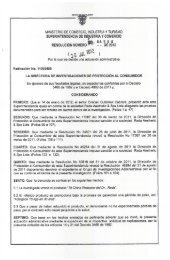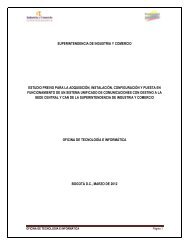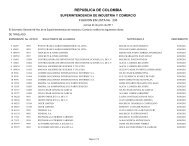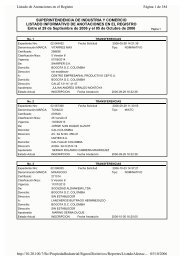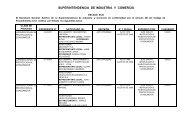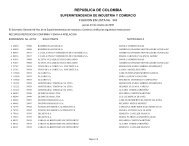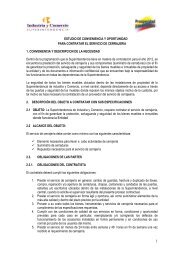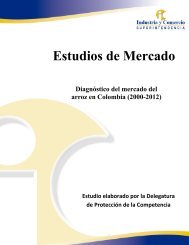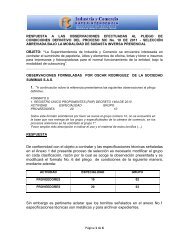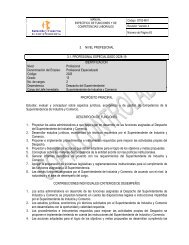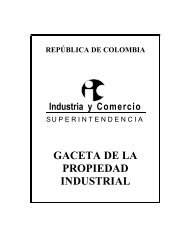Documentos de Trabajo - Superintendencia de Industria y Comercio
Documentos de Trabajo - Superintendencia de Industria y Comercio
Documentos de Trabajo - Superintendencia de Industria y Comercio
You also want an ePaper? Increase the reach of your titles
YUMPU automatically turns print PDFs into web optimized ePapers that Google loves.
Introducción<br />
La actividad económica por naturaleza ocurre en un tiempo y un lugar específico. De<br />
esa forma, existen elementos espaciales y temporales que <strong>de</strong>terminan las interacciones<br />
entre los agentes económicos, que <strong>de</strong>ben ser tenidos en cuenta en el proceso <strong>de</strong><br />
<strong>de</strong>finición <strong>de</strong> un mercado. De hecho, esas características temporales y geográficas<br />
<strong>de</strong>finen aspectos que resultan relevantes, puesto que <strong>de</strong>finen elementos en términos <strong>de</strong><br />
oportunidad, cercanía o proximidad, que pue<strong>de</strong>n diferenciar estratégicamente a un<br />
agente, bien o servicio en el mercado. Por lo anterior, es legítimo consi<strong>de</strong>rar que la<br />
competencia en un mercado no ocurre solamente entre bienes y servicios aislados, sino<br />
que existe una característica espacial que influye <strong>de</strong> forma <strong>de</strong>finitiva.<br />
Este componente espacial ha sido incorporado en el concepto <strong>de</strong> mercado que manejan<br />
diversas autorida<strong>de</strong>s <strong>de</strong> competencia en el mundo. En particular, reconociendo la<br />
<strong>de</strong>finición <strong>de</strong>l mercado relevante como el insumo fundamental para cualquier análisis<br />
<strong>de</strong> competencia, el Departamento <strong>de</strong> Justicia <strong>de</strong> los Estados Unidos propuso en 1992,<br />
los lineamientos para el análisis <strong>de</strong> integraciones, don<strong>de</strong> <strong>de</strong>fine el mercado relevante<br />
como:<br />
“A market is <strong>de</strong>fined as a product or group of products and a geographic area in<br />
which it is produced or sold such that a hypothetical profit-maximizing firm, not<br />
subject to price regulation, that was the only present and future producer or<br />
seller of those products in that area likely would impose at least a "small but<br />
significant and nontransitory" increase in price, assuming the terms of sale of all<br />
other products are held constant (U.S. Department of Justice and Fe<strong>de</strong>ral Tra<strong>de</strong><br />
Commission, 1992, s.p.)”.<br />
Así mismo, el Departamento <strong>de</strong> Justicia y la Fe<strong>de</strong>ral Tra<strong>de</strong> Commission <strong>de</strong> Estados<br />
Unidos (2010), reconoce que el carácter geográfico <strong>de</strong> los mercados pue<strong>de</strong> enten<strong>de</strong>rse<br />
<strong>de</strong>s<strong>de</strong> la ubicación <strong>de</strong> los oferentes o <strong>de</strong>s<strong>de</strong> los consumidores. En el primer caso:<br />
“Geographic markets based on the locations of suppliers encompass the region<br />
from which sales are ma<strong>de</strong>. Geographic markets of this type often apply when<br />
customers receive goods or services at suppliers’ locations. Competitors in the<br />
market are firms with relevant production, sales, or service facilities in that



